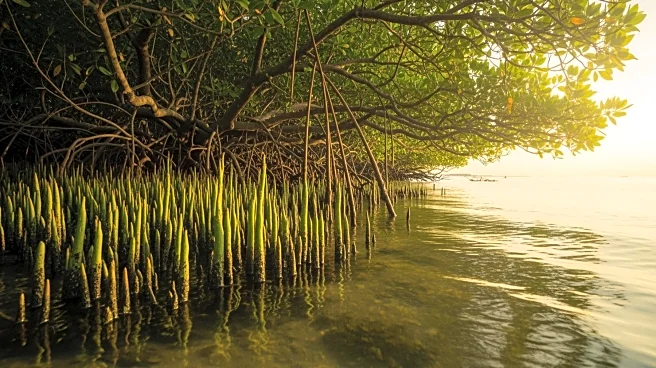What's Happening?
Contango Ore Inc., a prominent mining company, is advancing plans to develop a gold mine within the Johnson Tract, a private parcel surrounded by Lake Clark National Park in Alaska. The site, leased from
the Indigenous-owned Cook Inlet Region, Inc. (CIRI), holds significant deposits of gold, copper, and zinc. However, the project has sparked opposition from conservationists, commercial fishermen, and local lodge owners who fear the mine could disrupt wildlife habitats and local fisheries. The bay where Contango plans to build a shipping terminal is a critical winter habitat for endangered beluga whales, leading to legal challenges against federal permits granted for infrastructure development.
Why It's Important?
The proposed mining project highlights the ongoing tension between industrial development and environmental preservation in Alaska. While the mine promises economic benefits for CIRI and its Indigenous shareholders, it poses potential risks to the region's ecological balance. The conflict underscores broader debates about resource extraction in protected areas, with implications for wildlife conservation and Indigenous rights. The outcome of this dispute could set precedents for future projects in similar contexts, affecting stakeholders ranging from local communities to national environmental organizations.
What's Next?
As Contango Ore Inc. continues its development plans, legal battles are expected to intensify. Conservation groups and tribal governments have already initiated lawsuits to halt the project, citing environmental concerns. The company must navigate regulatory hurdles and public opposition while balancing economic interests with environmental stewardship. The resolution of these conflicts will likely influence policy decisions regarding resource management in Alaska's protected areas.
Beyond the Headlines
The Johnson Tract mining project raises ethical questions about the balance between economic development and environmental protection. It also highlights the complexities of Indigenous land rights and the responsibilities of corporations operating in sensitive ecological zones. The case may prompt broader discussions on sustainable development practices and the role of Indigenous communities in decision-making processes related to natural resource exploitation.












